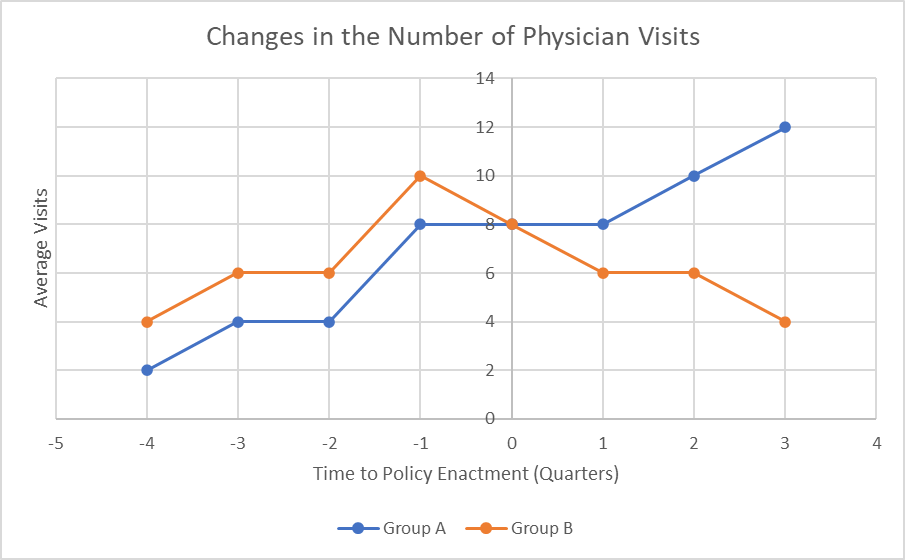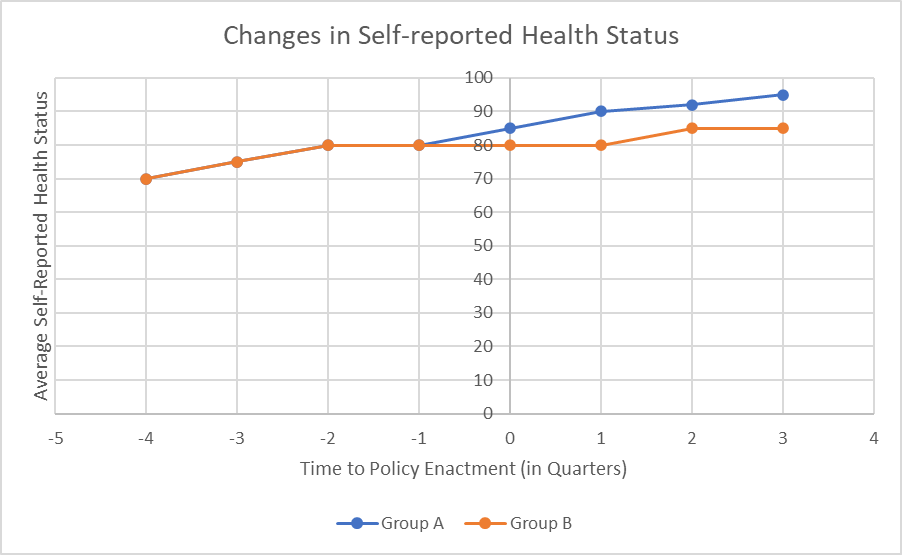Introduction
When measuring the outcomes of a program, it may be beneficial to plot the data before and after the intervention to eyeball the difference an intervention has made. The present project estimates two variables that may be affected by the intervention, including average physician visits by quarter and average self-reported health status by quarter. Figure 1 below demonstrates the changes in the number of physician visits by quarter in both groups. The plot demonstrates that, after the intervention, Group A increased its utilization of medical services, while Group B slightly decreased it.

Figure 2 below demonstrates the changes in the average self-reported health status by quarters in both groups. The plot demonstrates that Group A started to report a higher health status after the intervention.

Difference-in-Differences Application
In order to quantify the effect of the intervention on both outcomes, the difference-in-differences (DD) was used. The approach is one of the most commonly used and the oldest quasi-experimental research designs (Goodman-Bacon, 2018). The results of the DD analysis are provided in Table 1 below.
Table 1. The difference-in-differences analysis
The results of the DD analysis demonstrate that, assuming the common trend in Groups A and B. The results demonstrate that the intervention had an effect on both the number of physician visits and self-reported health status. In particular, the policy increased the number of physician visits in Group A by 5.5 visits a quarter on average after controlling for the common trend. At the same time, the intervention increased the self-reported health status by 8 out of 100 points after controlling for the common trend.
Conclusion
The DD analysis demonstrated that the policy was successful, as the insurance expansion had a positive effect on the self-reported health status of Group A. Thus, the central goal of the program was achieved. However, before implementing the policy universally, it is crucial to notice that the policy can increase the demand for healthcare services. In particular, the number of physician visits almost doubled in Group A, the enactment of the policy. Thus, the policy should be implemented only if the area can satisfy the increased need for healthcare services in the age group.
Reference
Goodman-Bacon, A. (2018). Difference-in-differences with variation in treatment timing (No. w25018). National Bureau of Economic Research.